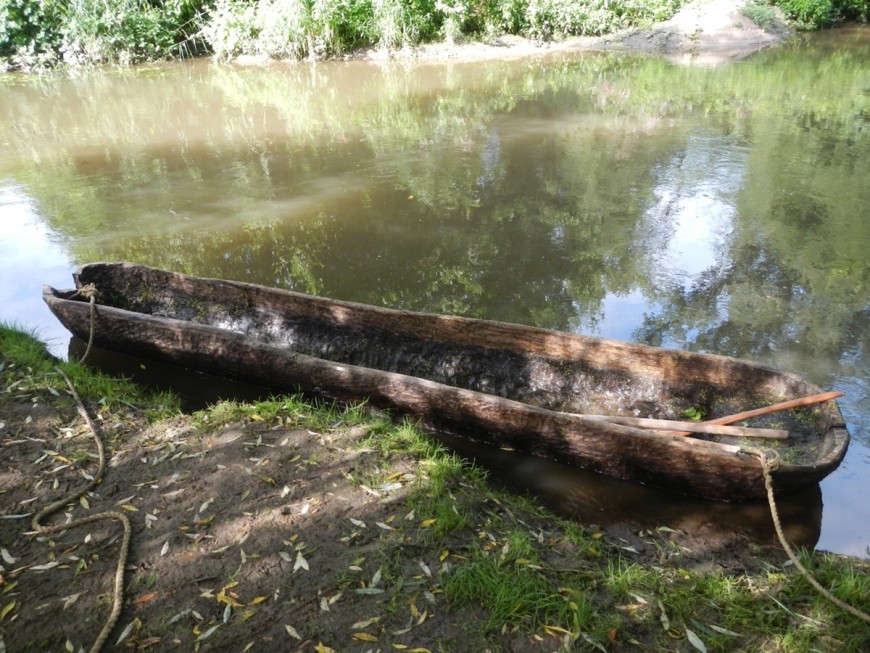Experimental archaeological test series on early medieval navigation on the Weschnitz
Trial run with reconstructed dugout canoe
2024/09/04 by Nicolai Hillmus
On August 5, 2024, the team of Medieval History at the Technical University of Darmstadt, together with the staff of the Freilichtlabor Lauresham (Laboratory for Experimental Archaeology) managed by Claus Kropp and Prof. Dr Gerrit Jasper Schenk, tested the dugout canoe reconstructed by the Lorsch experimental archaeologists on the basis of Carolingian finds.

The canoe-like boat, made of a single tree trunk, was being tested a few hundred metres south of the Wattenheim bridge near Lorsch. Various aspects were assessed, such as its driving stability, its navigability using different and combined types of propulsion such as punting and paddling, as well as the required power needed, taking into account the load capacity and current speed.
Early medieval dominions, such as Lorsch Abbey, which had numerous scattered possessions throughout the old empire, required a suitable transport infrastructure. The role of a waterway such as the Weschnitz, the navigability of which is still mentioned in the Lorsch Codex towards the end of the 11th century, should not be underestimated. Against this background, the experiments as part of the DFG-funded Weschnitz Fluvioscape project served to answer the question of how the shipping and transport system of the early medieval monastery of Lorsch functioned in real life.
